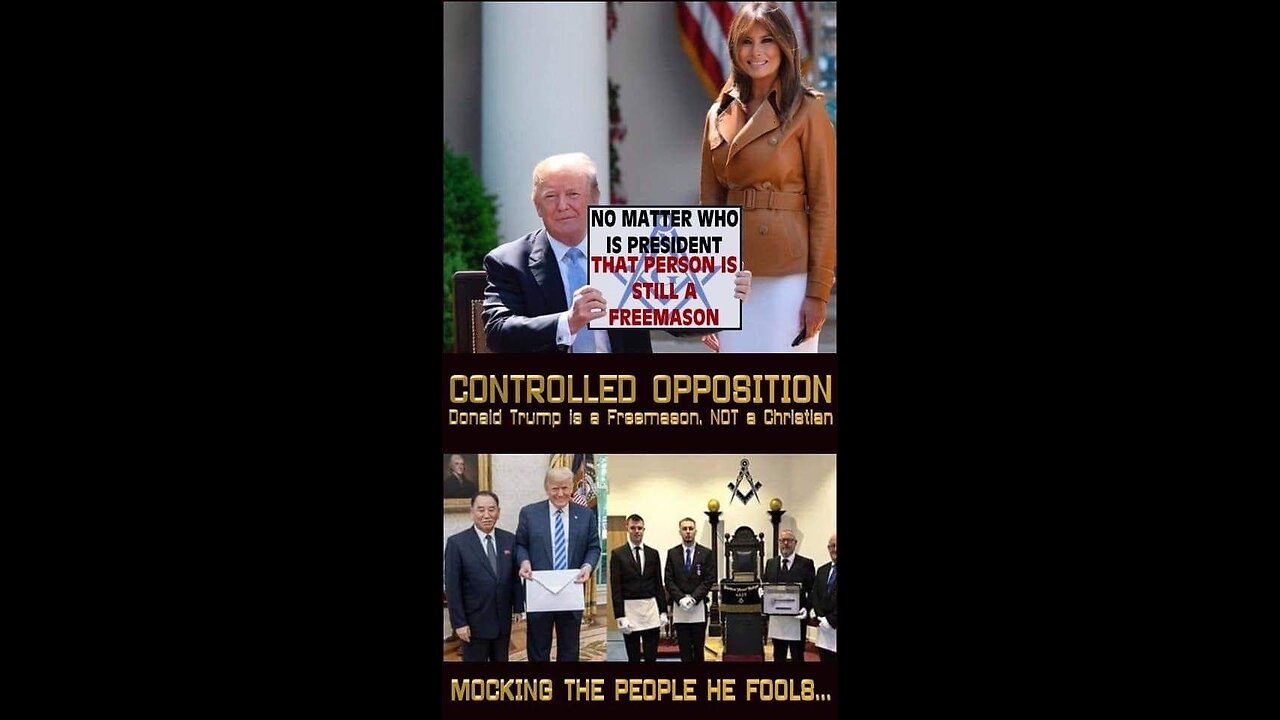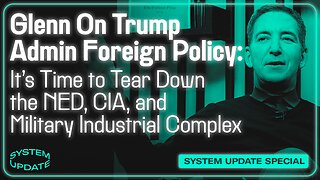Premium Only Content

The Donald Trump Enigma: A Tale of Doppelgängers, Hidden Agendas, and Elite Influence
The life and legacy of Donald J. Trump are marked by intrigue, controversy, and a seemingly endless string of dramatic twists. From real estate magnate to reality TV star to President of the United States, Trump has become one of the most polarizing figures in modern history. But what if there’s more to the Trump story than meets the eye? Some theorists claim that Donald J. Trump, as we know him, might not be the same man who rose to fame in the ’80s. According to some narratives, Donald Trump died in a 1989 helicopter crash—and was subsequently “replaced” by a look-alike. Could this be the most audacious cover-up in modern times?
The 1989 Helicopter Crash: A Turning Point in Trump’s Life
On October 10, 1989, a helicopter crash tragically took the lives of three top Trump Organization executives. The official story was that Trump was supposed to be on that helicopter but had canceled at the last minute. However, some theorists believe this version of events conceals a darker reality: that Trump actually perished in that crash. They argue that the man who re-emerged afterward showed different characteristics, suggesting either a profound transformation or the use of a double.
A Replacement or Reinvention?
If Trump did indeed die in 1989, the next question is: who stepped in? Some proponents of this theory suggest that Trump was replaced by a double, an individual groomed to continue his legacy and fulfill specific roles, potentially as a figurehead in future political and economic strategies. They point to the appearance of a “John Baron” or “John Miller” during the ’80s and ’90s—aliases Trump allegedly used in his business dealings. Some suggest that these were more than aliases, representing a real, separate individual or series of doubles used to maintain his presence.
Financial Resurrection and the Rise to Power
In the years following the 1989 crash, Trump experienced a financial resurgence. His failing real estate empire suddenly received massive infusions of capital, enabling him to not only rebuild but expand his influence. It was during this time that he began appearing with new allies, such as international financiers and powerful business figures, sparking rumors that his resurrection was the result of a larger plan orchestrated by powerful elites. Could it be that Trump’s second life was financed and directed by interests beyond the Trump Organization, with a vision that extended to global influence?
The Elite Connection: British and American Influence
This theory often intersects with the idea that Trump’s actions and success were subtly shaped by intelligence agencies and elite circles. According to some sources, Trump’s connections in the UK and among powerful financial institutions allowed for smooth, sometimes suspiciously favorable, deals. Could this indicate that he was an asset for intelligence networks? Or even that his brand and personality were carefully cultivated to serve a larger agenda? As these theories go, Trump’s success and eventual run for president could have been part of a long-term plan aimed at using his influence to reshape the geopolitical landscape.
The Doppelgänger Phenomenon and Identity Shifts
Observers of this theory also note physical and behavioral changes in Trump. Some argue that post-1989, his demeanor shifted noticeably, showing a more aggressive, media-savvy persona. It’s not uncommon for leaders to evolve, but some claim that the differences are too pronounced to ignore. For instance, Trump’s tone, language, and public strategies became notably sharper and more polarizing after his supposed replacement. Those who support this theory interpret these shifts as signs of a different person or a more calculated, elite-directed version of Trump.
The Ultimate Cover-Up?
If Trump was indeed replaced, the implications are vast. His political rise, his policies, and his appeal to certain demographics could all be part of a strategic manipulation, facilitated by powerful players aiming to consolidate influence through a highly charismatic, divisive figure. From this perspective, Trump becomes less a lone billionaire and more a puppet within a larger game—one that manipulates public opinion, divides societies, and potentially advances hidden agendas on a global scale.
Legacy and Impact: A Shrouded Truth?
Whether or not this theory holds any truth, it serves as a reminder of the deep complexities within power structures and the potential for hidden motives at play. The idea of doppelgängers and hidden replacements in positions of influence might sound like fiction, but history is filled with mysterious deaths, disappearances, and figures who appeared to reemerge with vastly different perspectives and skills.
In the end, the story of Donald J. Trump—whether man, myth, or metaphor—represents a modern reflection on influence, manipulation, and the unseen forces shaping history. True or not, such theories provoke us to question the narratives presented to us, urging us to remain vigilant about the intentions of those in power.
Sources:
Donald Trump is not who you think he is:
https://stateofthenation.co/?p=240756
Donald Trump died on October 10, 1989:
https://reformation.org/trump-britannia-connection.html
-
 2:39
2:39
FragmentsOfTruth
2 days agoFort Knox’s Gold Mystery: Unaudited Wealth and Conspiracy Theories Unravel
1272 -
 4:31:10
4:31:10
I_Came_With_Fire_Podcast
17 hours agoMy EURO Divorce | HOGG with a side of PAC | Foreign FUNDS Fudged
30.1K2 -
 37:44
37:44
Glenn Greenwald
13 hours agoGlenn On Tearing Down the Military Industrial Complex, Exposing Pro-Israel Indoctrination, and More | SYSTEM UPDATE #411
106K120 -
 4:04:20
4:04:20
Nerdrotic
13 hours ago $49.47 earnedAmazon Takes 007! Hollywood is Lost, Disney Cancels WHO? | Friday Night Tights 342 /w ItsAGundam
167K39 -
 43:27
43:27
Tucker Carlson
12 hours agoRay Dalio: America’s Hidden Civil War, and the Race to Beat China in Tech, Economics, and Academia
165K189 -
 56:56
56:56
Candace Show Podcast
12 hours agoEXCLUSIVE: Taylor Swift Will Be Deposed. | Candace Ep 150
187K161 -
 1:03:52
1:03:52
IsaacButterfield
9 hours ago $4.34 earnedRepublican Vs 25 Transgender Activists | Jewish Outrage | Lizzo Loses All the Weight
55.7K14 -
 1:10:23
1:10:23
Edge of Wonder
13 hours agoChinese Biochips Hacking Minds? Quantum Control & Journey Song Mandela Effect
79.3K9 -
 2:15:46
2:15:46
Quite Frankly
16 hours ago"Ghosts, Robotics, and OBE's" ft. Dr. Albert Taylor 2/21/25
75.9K18 -
 55:52
55:52
LFA TV
1 day agoMaking Germany Great Again | TRUMPET DAILY 2.21.25 7PM
49.1K9